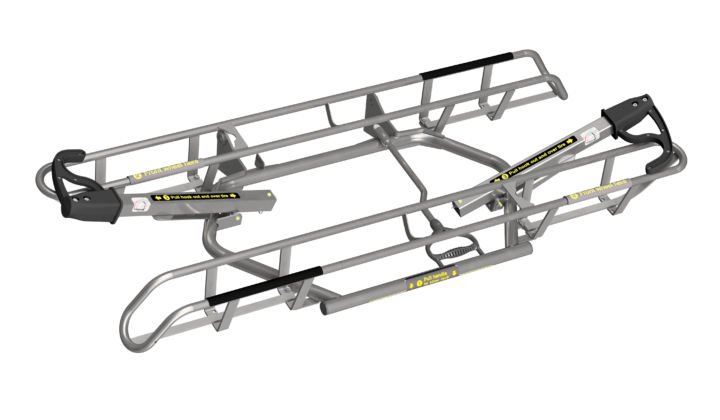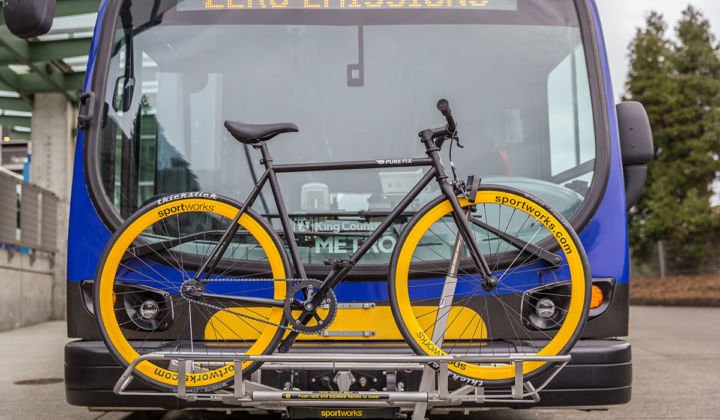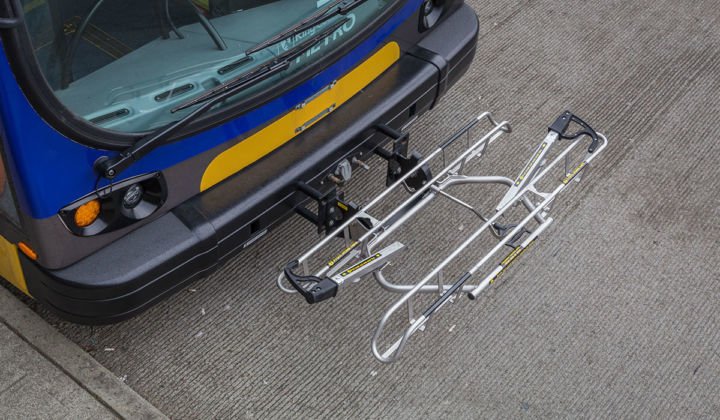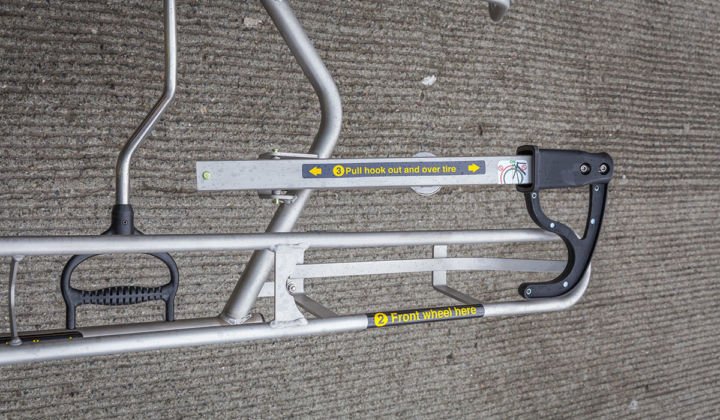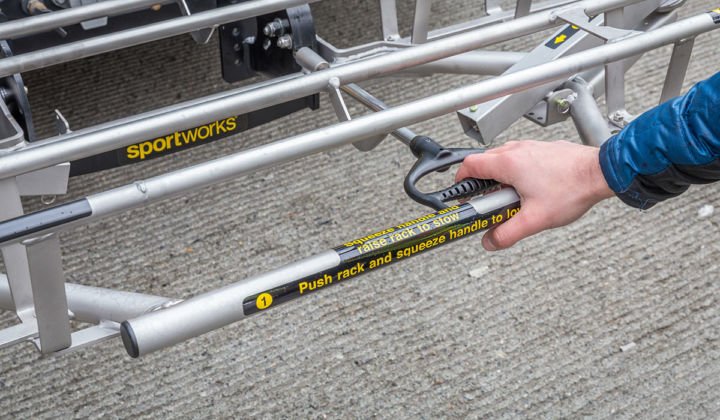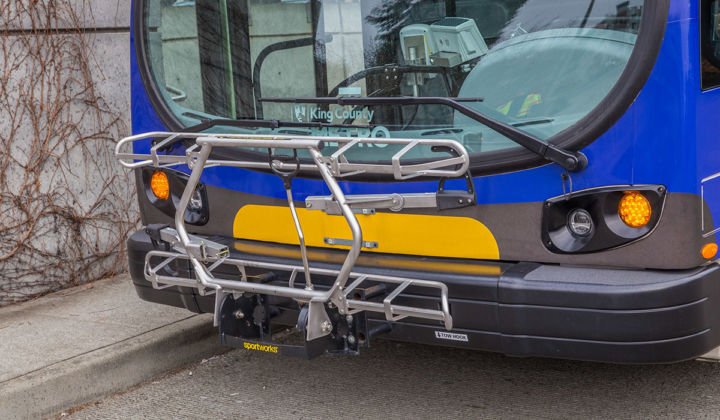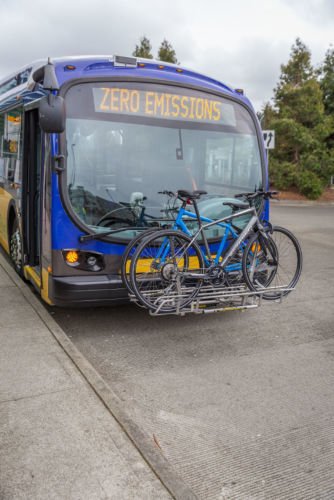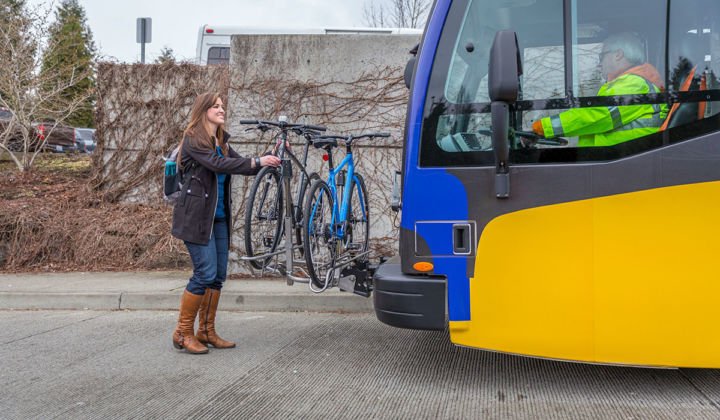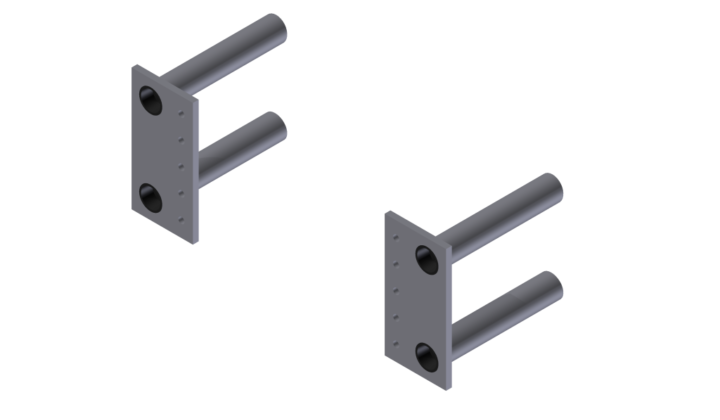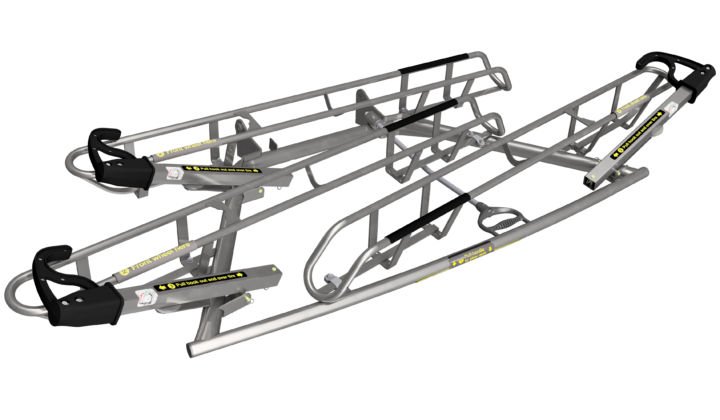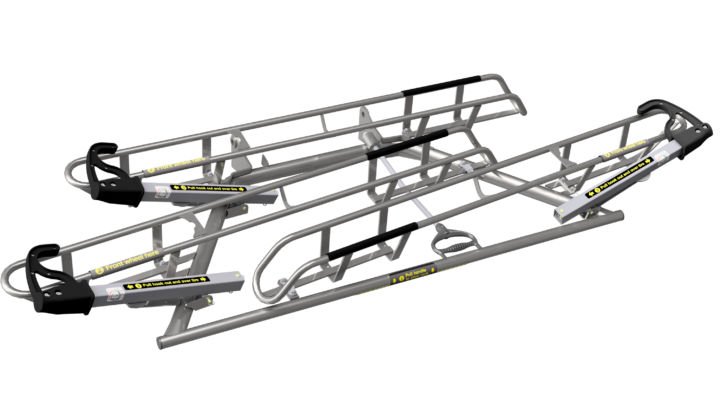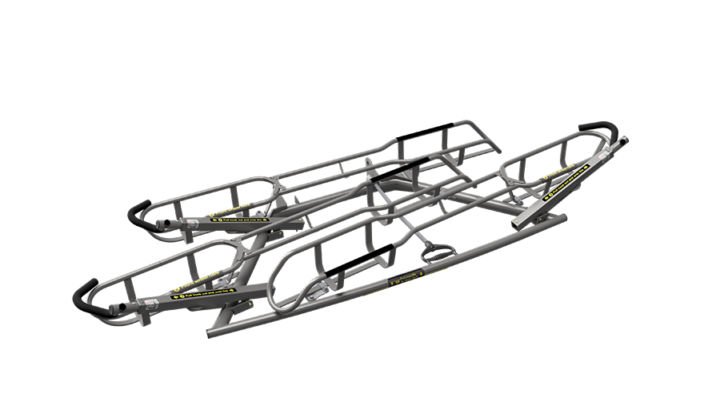Apex 2™
NEED HELP? 888-661-0555 / M-F: 7AM - 4PM PACIFIC
Drawings & Downloads
The sleek, compact and modular Apex 2 follows in the footsteps of the Apex 3 transit bike rack. The frame, wheel trays, and support arms have been designed to reduce bounce while the rack footprint is minimized for better vehicle turn radius, less turn signal and headlight interference and improved safety. This innovative 2 position bike rack is the new standard for bike racks on buses.
The Apex 2 carries two bikes on a completely modular frame and is compatible with existing Sportworks mounting brackets. Other benefits include:
Modified wheel trays accommodate a large array of bikes with up to 29" diameter wheels, 3.2" wide tires and a 48" wheelbase
New support arm handles provide improved ergonomics and ease of use
Modular design reduces maintenance costs by allowing damaged and worn out parts to be easily replaced
Rugged stainless steel construction with anti-glare finish provides maximum corrosion resistance
Right hand drive configuration available
Optional fat tire trays and support arms accommodate tires up to 5.5" in width and a 51" wheelbase
For information about safety, vehicle requirements, and other usage information please refer to our FAQs.
Hardware
This stand-alone Apex 2 pivot plate is required with a bracket when the Ten Second Bracket is not the preferred mounting option.
Apex Pivot Plate
The Apex Pivot Plate measures 20” wide, and provides the mounting and pivot point exclusively for Sportworks Apex Series bike racks. The pivot plate is connected to bumper brackets, and enables the bike rack to move between the stowed and deployed positions.The Apex 2 Pivot Plate does not come with a torsion spring. However, An optional torsion spring available upon request. The Pivot Plate is powdercoated black.
Hardware
Sportworks offers two primary types of Brackets that secure the Pivot Plate and Bike Rack to a vehicle bumper.
Stand-Off
The Stand-Off is the most common bracket type, and attaches through holes drilled into the front of the vehicle bumper. Stand-Off brackets are available in a variety of lengths, and do not require removal of the bumper for installation. The following information may be required to determine the proper fit for your vehicle: vehicle make and model, vehicle year, bumper manufacturer and type.
C-Bracket
The C-Bracket fits around the bumper by attaching to the frame, and alleviates the need to drill holes through the front of the vehicle bumper. C-Brackets come in a variety of sizes, and require removal of the bumper for installation. The following information may be required to determine the proper fit for your vehicle: vehicle make and model, vehicle year, bumper manufacturer and type.
Accessories
Apex 2 Pivot Plate With Deployment Sensor
Dashboard mounted light notifies driver when rack is deployed
Safety enhancement feature
Required in California
Apex 2 Pivot Plate With Torsion Spring Kit
Reduces the lifting weight when stowing and deploying the rack
Corrosion resistant design with stainless steel spring
Easily attaches to most Sportworks pivot plates
Apex 2 On A Demonstration Stand
Easily demonstrate bike rack loading/unloading without a vehicle present, for education or training purposes
Heavy-duty construction can support a rack fully loaded with 3 bikes
Fast and easy to assemble, disassemble, and transport
More information here: Demonstration Stand
Apex 2 With Ad Panel
Maximize advertising space and create a new stream of revenue
Heavy-duty construction is bus washer safe
Quickly and easily attaches to most Sportworks racks
Will require Torsion Spring Kit
How to Use
Sportworks Transit Racks - Quick, Easy and Intuitive!
Lower Rack
Approaching from the curbside, the rider lowers the rack with one hand while supporting the bike with the other hand. This durable rack is as easy to raise as it is to lower.
Load Bike
After lowering the rack, the rider places the bike into one of the rack’s open wheel trays. All bike positions are completely independent of each other, making it easy to load or unload bikes with others already loaded in the rack.
Secure Wheel
To secure the bike, simply pull the unique self-storing support arm out and over the front tire. The handle should be placed as close to the front brake and head tube as possible to ensure safety and security of the bike, and in all cases the handle must be closer to the head tube than the highest point of the tire.
Related Products
Apex 3™
The Apex 3 is our modular 3-position bike rack and it has the most compact layout of any 3-position transit rack. The Apex 3™ is recommended for use on full-sized, cutaway and paratransit vehicles.
Apex 3 RL™ - Reduced Length
The Apex 3 RL is our newest edition to the Apex family. We designed it for customers who want the superior features of the standard Apex 3 rack in a slightly more compact package or need a more compact 3 position rack due to bus length laws.
Apex Pivot Plate
The Apex Pivot Plate is an essential component of the bicycle rack system for all Apex bicycle racks by providing the mounting and pivot point for all of our Apex bicycle racks.
Apex Ten Second Bracket™
The Apex Ten Second Bracket (TSB) is an integrated pivot plate and bracket assembly that allows fast and easy removal of Sportworks front bumper-mounted bike racks for towing and maintenance.
Apex Fat Tire Option
Accommodate bikes with extra wide tires (up to 5.5" wide), commonly known as fat tire bikes. These modular wheel trays are available for Apex 3, Apex 2 and Apex 1 transit bike racks.

